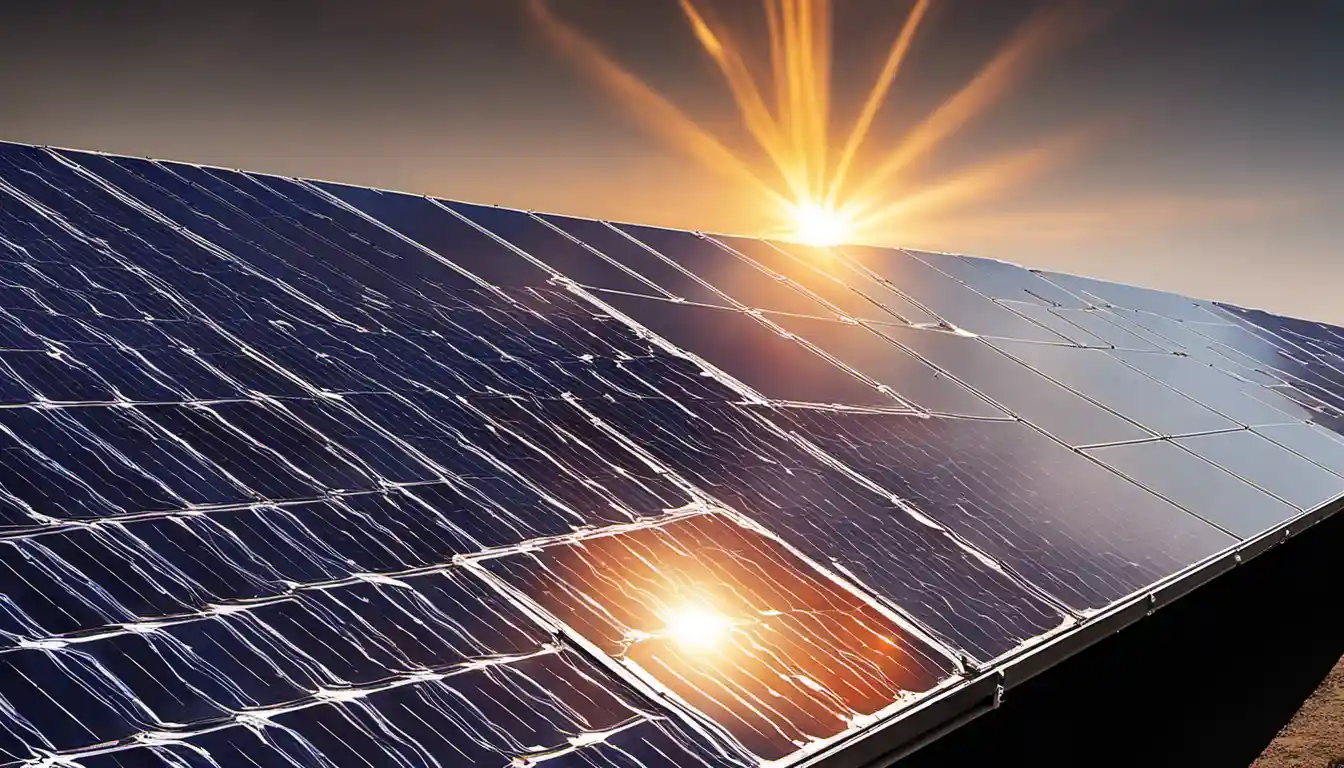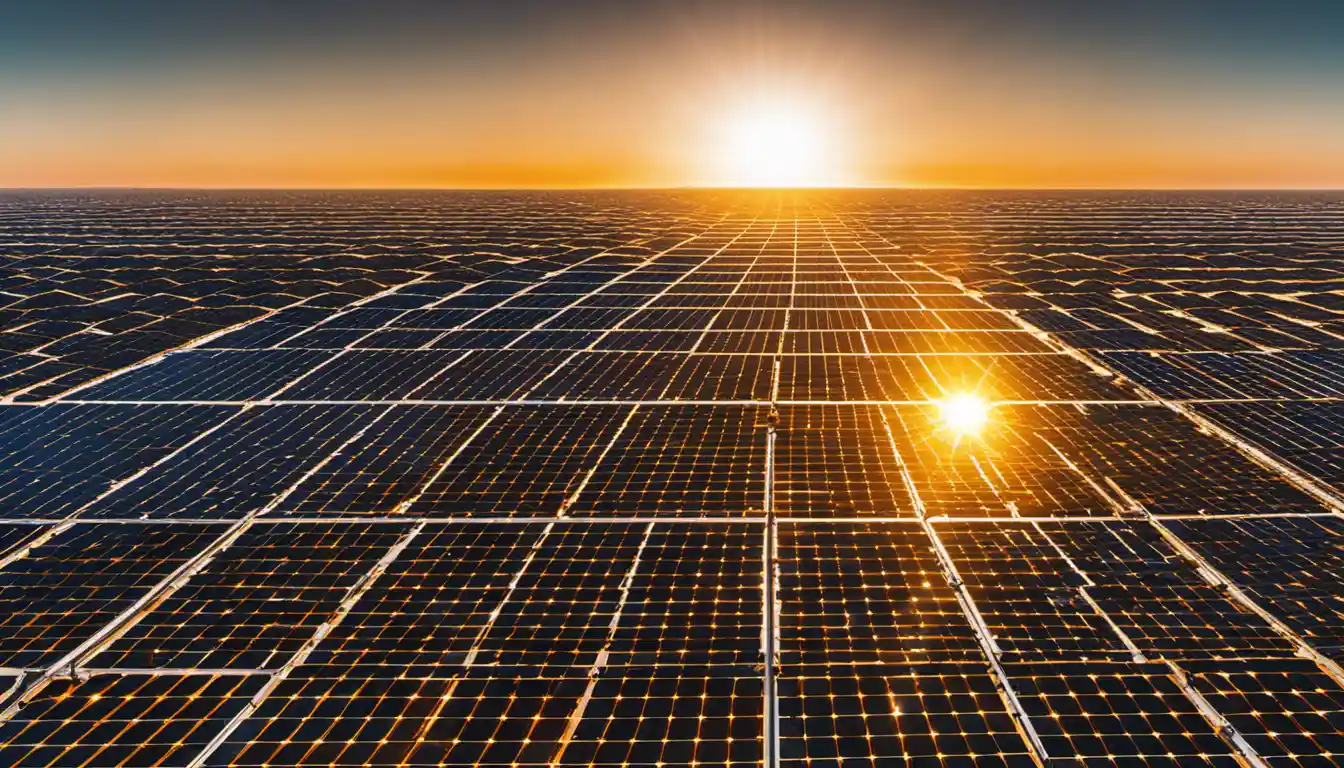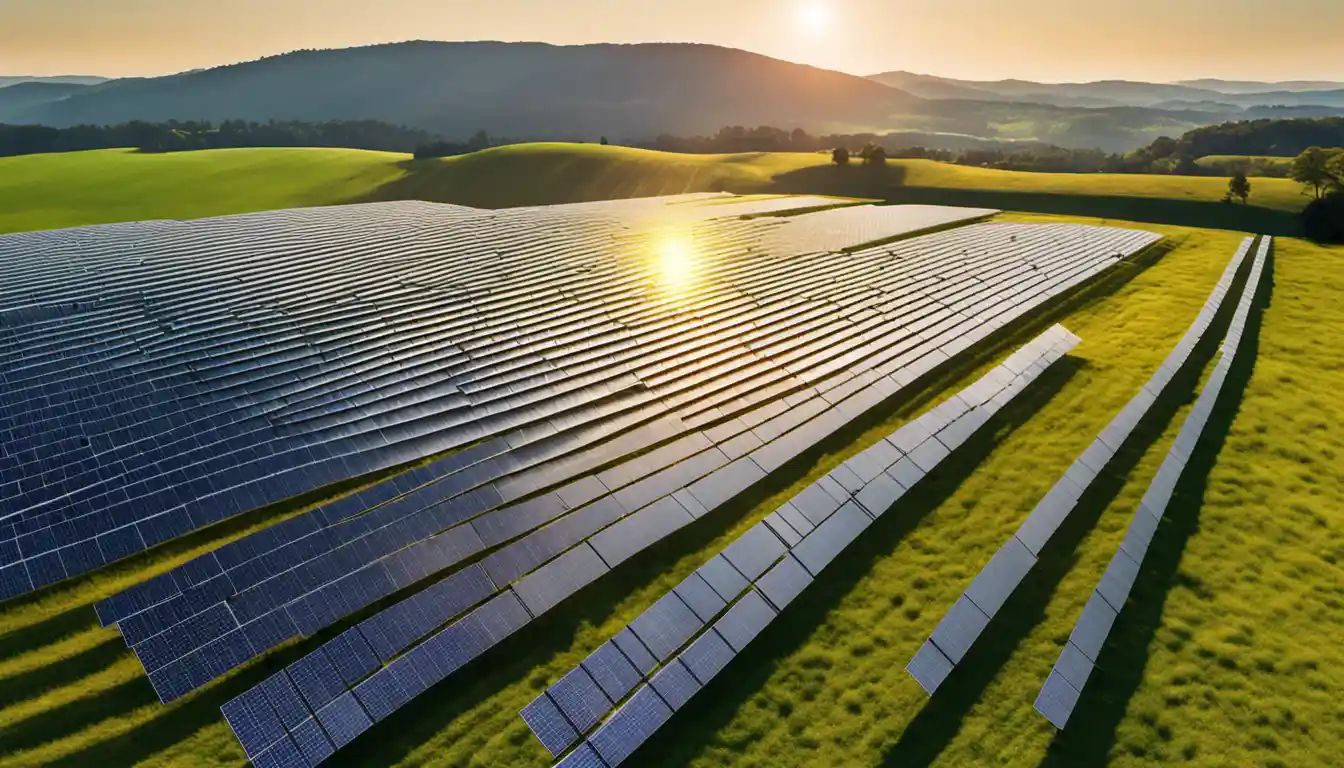Overview
Solar panel reflection, also known as glare, can be a problem in some situations because it can cause discomfort or visual impairment for people, especially drivers or air traffic controllers. In addition, the reflections can also be harmful to surrounding wildlife or heat-sensitive equipment. Most modern solar panels are designed with anti-reflective coatings to mitigate these issues.
Understanding Solar Panel Glare
Solar panels and glare? Sounds counter-intuitive, doesn’t it? After all, solar panels are meant to absorb sunlight, not reflect it away. However, the reality is that solar panel glare can be a surprising side effect of their operation. It may not be common, but when it does occur, it can be a nuisance for your neighbor or potentially dangerous around airports. So, it’s important to understand the specifics of solar panel glare and how you can address it.
How Solar Panels Work – A Quick Recap
Before we dive into the complexities of solar panel reflection problems, let’s quickly revisit how solar panels work. A solar panel converts photons from the sun’s rays into electricity through a process known as photovoltaic effect. The panel consists of many individual solar cells, which work together to generate electricity. Ideally, we want the entirety of sunlight falling on the panel to be absorbed and converted into energy. Looked at from this angle, reflection is undesirable as it’s essentially energy bouncing back unutilized.
The Surprising Fact: Solar Panel Glare and Why it Occurs
Angular Dependency of Light Absorption and Reflection in Solar Panels
So, if solar panels are designed to absorb sunlight, why does this reflection happen? The key lies in understanding that the absorption of sunlight by solar panels is angle-dependent. When sunlight hits the solar panel directly, the panel can absorb the maximum amount of light, but when the sun isn’t directly overhead, the incidence angle of light increases, and so does the possibility of reflection.
Interaction of Solar Panel Operation and Glare Production

What complicates this is that solar panels need to be directly face-on to the sun to generate maximum electricity, but this is also when they produce the most glare. As a solar panel tilts to track the sun across the sky, the amount of sunlight reflected might increase or decrease, depending on the angle and orientation of the solar panel.
Reflectivity and Solar Panel Glare
How Light Angles Contribute to Reflectivity
The angle at which sunlight hits the panel plays an important role in reflectivity. Visualize throwing a tennis ball at a wall. If you aim for a direct hit, the ball bounces back – this is like the sun overhead producing minimum glare. Now, if the ball hits a wall at an oblique angle, it ricochets off the wall and flies away at an angle – similar to sunlight hitting a panel at sunrise or sunset, and producing glare because of the increased incident angle.
Comparing Solar Panel Glare to Glare from Other Sources
It’s worth noting that other structures and fixtures, like glass windows and cars, often produce more glare than solar panels due to their more reflective properties. Yet, the highly concentrated nature of glint and glare from solar panels can make this issue more problematic in certain cases.
Understanding Glint and Glare from Solar Panels
Defining Glint and Glare: A Clear Distinction
While we often group “glint” and “glare” together when speaking about solar panel reflection problems, there is a slight distinction between the two. ‘Glint’ is described as a brief, small, bright light, while ‘glare’ is a more severe, continuous, blinding light.
How Glint and Glare are Produced by Solar Panels

Glint and glare from solar panels occur when sunlight is reflected off the surface rather than being absorbed. This can be due to the angle of the sun, the angle of the panel, the type of panel, the cleanliness of the panels, and other factors.
The Impact of Solar Panel Glare on Neighbors
Solar panel glare can be more than just a trivial annoyance for your neighbors. In severe cases, it can be an intrusion into their personal space which can lead to disputes. The glare from your panels can make it uncomfortable for them to enjoy outdoor spaces or even cause dazzling effects inside their homes during certain times of the day and year.
Assessing Solar Panel Glare: What Information is Needed?
Role of Anti-Reflective Coating
Anti-reflective coating plays a notable role in minimizing solar panel reflection problems. By reducing the reflectivity of the solar panel surface, these specialized coatings can assist in reducing glare. However, it’s important to note that these do not entirely eliminate the glare, and some reflection will still be experienced.
Importance of Solar Panel Orientation and Placement
Solar panel positioning is another significant factor in managing glare. Using specialized software, one can predict where and when glare will occur throughout the year for a planned solar installation. This can help optimize panel positioning for minimum glare while also taking into account the need for maximum energy production.
Mitigating Solar Panel Glare
Potential and Existing Solutions for Solar Panel Glare

Solar panel glare can be mitigated, and several solutions exist in the market today. The use of non-reflective or anti-reflective coatings is a typical approach. As we’ve discussed earlier, these coatings reduce but do not completely eliminate glare.
How to Reduce Glare for Neighbor Friendly Solar
If you’re planning a solar installation, consider taking a few steps to reduce potential glare beforehand. Research proper solar panel orientation and placement to minimize potential glare. You can also have a discussion with your neighbors to address their potential concerns and take necessary steps to prevent or address solar panel glare.
Solar Panel Adjustments for Less Glare
Sometimes, simply adjusting the position or angle of your solar panels can reduce the amount of glare they cause. You can hire a professional to assist with this, or do it yourself if you have a movable solar array.
Anti-Reflective Coatings – Do They Stop Glare Completely?
As we’ve already discussed, while anti-reflective coatings are helpful in reducing glare, they cannot entirely eliminate it. This means that while they form part of the solution, they cannot completely solve solar panel reflection problems on their own.
Understanding the Solar Panel Glare Factor in Airport Regulations
Solar panel glare becomes a significant concern when we’re speaking about installations near airports. Regulations require that solar installations avoid creating glare that could affect pilots’ visibility. Therefore, rigorous glare studies are conducted before the installation of solar panels near airports.
Conclusion: The Reality of Solar Panel Reflection Problems and their Solutions
Addressing solar panel glare is an important part of installing and maintaining solar panels. While there are challenges, numerous feasible solutions are available that can help you ensure that your switch to solar energy is as smooth and neighbor-friendly as possible. Moreover, keep in mind that installing solar panels also brings a plethora of benefits, which you can read about in our comprehensive guide, “Advantages and Disadvantages of Solar Energy.” Ultimately, the aim is to balance the benefits of solar energy with the potential problems that might occur, including glare.



